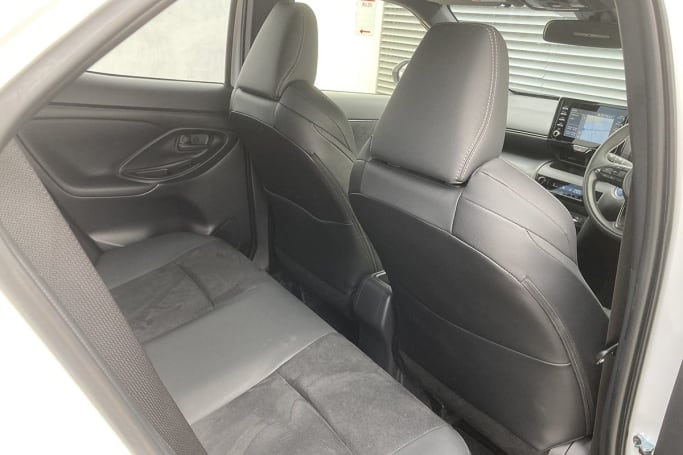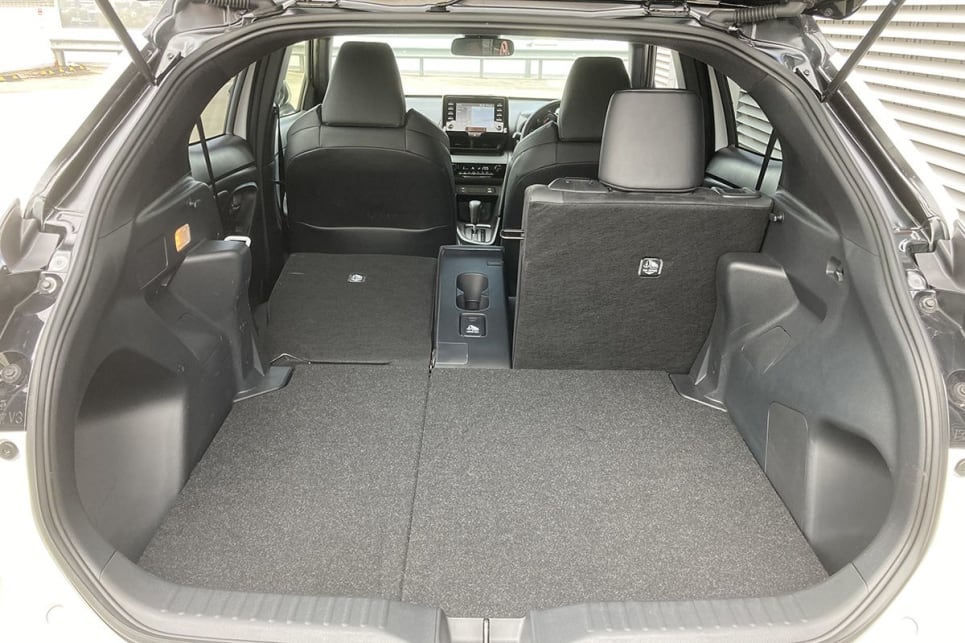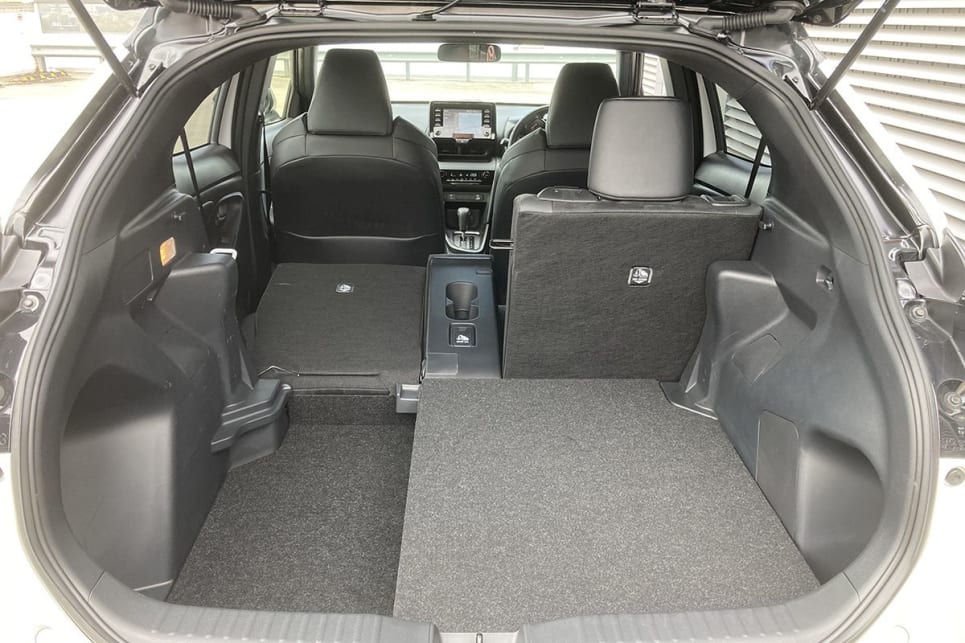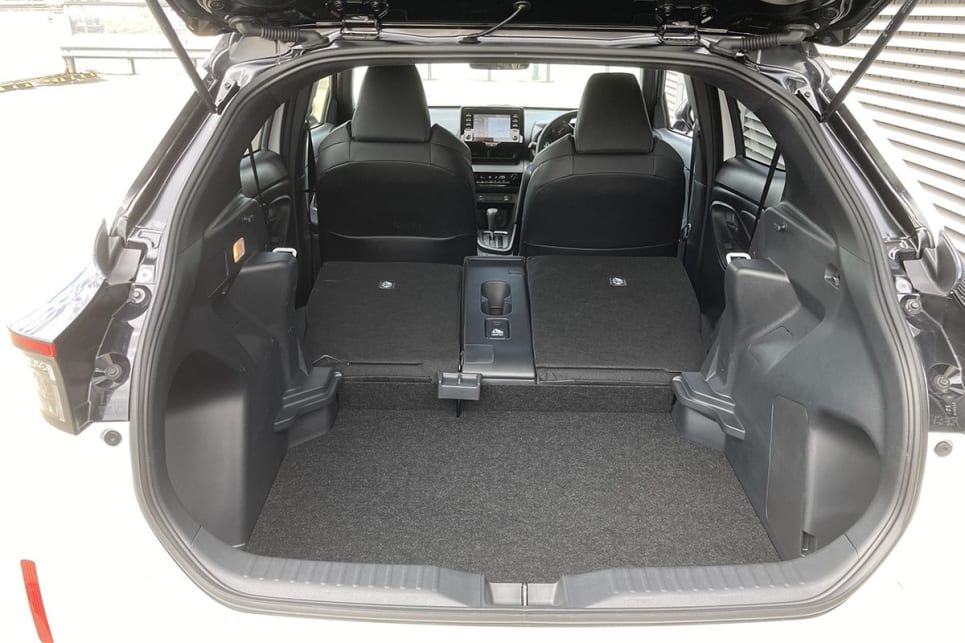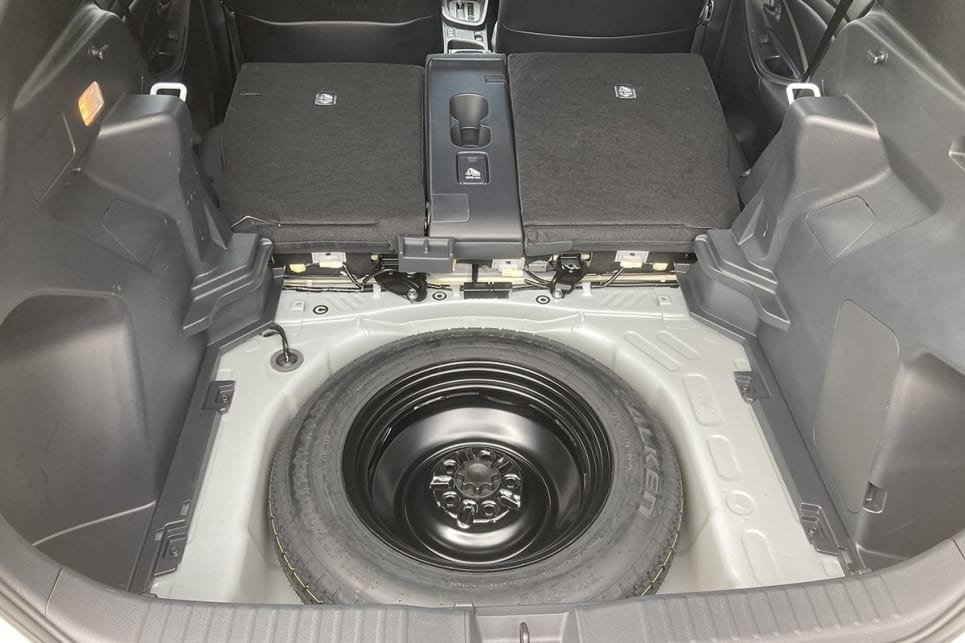Good question. It totally depends on how 'crossover' you like your Yaris Cross to be.
Starting from $35,840, before on-road costs, the GR Sport Hybrid lives at the pointy end of the range, alongside the Urban Hybrid flagship.
And that's fine, as it does feature a few extras not found in the base GX and mid-range GXL (why does Toyota insist on '70s Datsun and Ford grade names?).

Whether we'd call the dynamic and visual upgrades "thrilling" is debatable.
Outside, the GR Sport gains black mirror caps, mesh for the grille and bumper insert, a different rear diffuser and red brake calipers on unique 18-inch wheels. It also sits 10mm closer to the ground, thanks to lowered suspension that also boasts a revised tune.
Inside, you'll find redesigned front seats with suede-like material and vinyl bolsters, an extra USB-C port, an air-purifying filter for the climate control system, aluminium pedal covers and a smattering of GR logos, colours and trim finishes to round things out, while extra underbody bracing is there, "... to control body roll and improve ride comfort". We'll go into more detail later on.
But there are no changes to the hybrid powertrain.
As with all Yaris Crosses, the GR Sport has a long list of standard safety equipment, bringing eight airbags, Autonomous Emergency Braking (AEB), lane-keep assist and adaptive cruise control. See the Safety section for more.

Since it's based on the GXL hybrid 2WD (front-wheel drive) grade, you'll also find LED headlights, keyless entry/push-button start, a leather-wrapped wheel with paddle shifters, voice recognition, a 7.0-inch touchscreen, digital radio, Apple CarPlay/Android Auto connectivity, satellite navigation, 'Toyota Connected Services', auto-folding mirrors, rear privacy glass, and a temporary spare wheel.
For handy luxuries like a powered driver's seat, heated front seats, a head-up display and powered tailgate, you'll need the identically-priced Urban Hybrid 2WD. Hmm.
Or... for exactly the same money (from $35,840 plus ORC, remember), there's the GXL AWD, which drops two inches in wheel size but picks up 10mm more suspension height and an extra electric motor on the rear axle for extra traction. Gripping.
Rivals? Compared to the scores of non-hybrid small SUV alternatives, there are few that directly align with the GR Sport Hybrid.

The very mild-hybrid Mazda MX-30 G20 probably comes closest in price, or – from about 10 per cent more – there's the new Subaru Crosstrek AWD.
Or, in-house competitors like the ageing but still-impressive Toyota C-HR Koba Hybrid and larger Corolla Cross Hybrid. Others, like the uneven Haval Jolion Hybrid and Honda's fine HR-V e:HEV are more expensive again.
In summary, then, we reckon the GR Sport Hybrid's biggest value challengers come from within Toyota generally, and the Yaris Cross range specifically. It's hard to go past the GX or GXL Hybrid AWDs.







